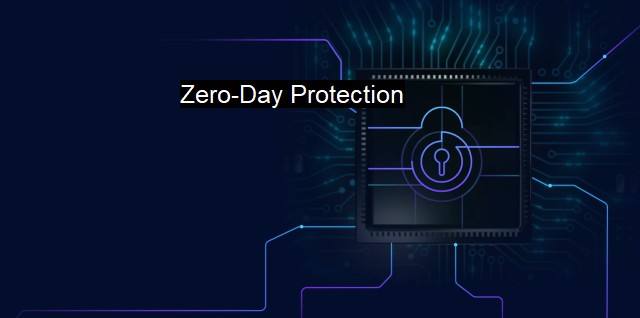What is Zero-Day Protection?
Zero-Day Protection: Mitigating Unknown Attacks in Cybersecurity and Antivirus Solutions
Zero-day protection is a security concept that addresses unknown threats or vulnerabilities in software or hardware that developers or manufacturers have not yet discovered or addressed. In cybersecurity vocabulary, a zero-day vulnerability refers to a security flaw that is unknown to the software vendor, hence there are zero days between the time the vulnerability is discovered and the first attack. Because these flaws are new and unfixed, cyber attackers can potentially exploit them to harm computer programs, data, networks and computers. Therefore, zero-day protection becomes essenential to provide a security shield against these undiscovered situations.Zero-day protection, often bundled with antivirus and security software packages, seeks to provide comprehensive security to individual users, businesses, and institutions alike. It does so by focusing on protecting systems from threats whose signatures do not exist in existing databases. In this context, a signature is essentially a distinct pattern or characteristic of a piece of malicious software, also known as malware.
Classical antivirus systems rely on signature-based detection mechanism where they compare files with a database of known harmful software. zero-day attacks by definition make use of vulnerabilities that haven't been seen before, so the signature of their exploit won't be in the database, rendering the signature-based detection mechanism ineffective in guarding against them. Hence, relying solely on traditional antivirus solutions leaves systems potentially susceptible to zero-day attacks.
In contrast, zero-day protection utilizes a variety of tactics including heuristics, behavior-based detection, and sandboxing to defend against unidentified threats. Heuristics scan and analyze code for suspicious patterns or structures that might suggest malicious intent. Behavior-based detection monitors for unusual or suspicious behaviors such as uninitiated outbound network connections or unauthorized data access. Sandboxing runs software or programs in a virtual and isolated environment where their activities can be observed and analyzed without posing risk to the actual system.
Zero-day protection systems may incorporate threat analysis and threat intelligence into their range of responses. Threat intelligence is essentially the fetching, analyzing and sharing of information about potential security threats. It aims at staying one step ahead of potential attackers by predicting their actions based on historical activity.
As part of a comprehensive cybersecurity strategy, zero-day protection helps safeguard against both renowned and not yet identified threats. In an increasingly digital age, where security breaches may have catastrophic implications not only for personal data but also for essential operations of businesses and even countries, zero-day protection is more vital than ever.
Zero-day protection is neither foolproof nor a standalone solution. Just as hackers are continually developing new attacks, cybersecurity must continually adapt and evolve to stay ahead. Keeping systems updated with the latest software patches, adhering to good cybersecurity hygiene, and employing a layered security approach lies at the heart of a robust security posture.
It's vital to remember that technological solutions, however advanced, are only as sturdy as the knowledge and habits of the end users. Continued cybersecurity education for all system users, whether they are a domestic individual or a big corporate employee, is an integral part of maintaining a comprehensive security environment.
Zero-day protection incorporates advanced techniques and technology into bolstering system security and offers a defense line against unidentified or emerging threats. This essential layer of protection forms part of a broader security strategy depending on the responsible and informed behavior of computer users alongside ongoing development of security tools to respond to rapidly evolving cyber threats and attacks.

Zero-Day Protection FAQs
What is zero-day protection?
Zero-day protection refers to the ability of cybersecurity systems and antivirus software to detect and prevent cyberattacks that exploit previously unknown vulnerabilities. This protection is critical for keeping systems secure, as attackers are constantly developing new ways to breach systems and steal data.How does zero-day protection work?
Zero-day protection relies on a range of techniques to identify and mitigate new threats. This may include real-time monitoring of network traffic, heuristic analysis of suspicious code, and machine learning algorithms that can rapidly identify patterns of attack. By combining these approaches, cybersecurity systems can detect and block zero-day attacks before they can do damage.Why is zero-day protection important?
Zero-day protection is essential for ensuring that systems remain secure in the face of constantly evolving cyber threats. When attackers discover new vulnerabilities, they often use these to launch targeted attacks designed to steal sensitive data or cause other damage. By detecting these attacks before they can do harm, zero-day protection helps to keep organizations and individuals safe from the latest threats.Can zero-day protection guarantee complete security?
While zero-day protection is an important component of cybersecurity, it cannot guarantee complete security against all possible threats. Attackers are constantly developing new techniques and vulnerabilities, and it can be difficult for even the most advanced systems to keep up. That said, zero-day protection is an important layer of defense that can significantly reduce the risk of cyber attacks and help to keep systems and data safe.| | A | | | B | | | C | | | D | | | E | | | F | | | G | | | H | | | I | | | J | | | K | | | L | | | M | |
| | N | | | O | | | P | | | Q | | | R | | | S | | | T | | | U | | | V | | | W | | | X | | | Y | | | Z | |
| | 1 | | | 2 | | | 3 | | | 4 | | | 7 | | | 8 | | |||||||